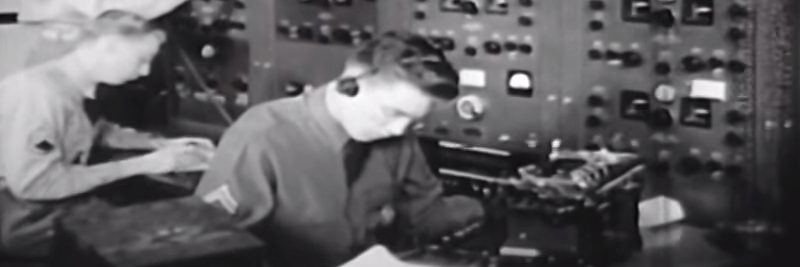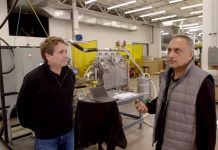The invention of the Walkie Talkie has made it easier for communication to occur between two people. Kids love to use these radio devices and long-range walkie talkies make it possible to communicate in virtually any environment, including warfare. The initial invention of this device is often credited to the Consolidated Mining and Smelting Company in Canada, who used a version of a field radio in their airplanes so that their pilots could speak to each other, even while in remote locations.
The first modern walkie talkies, however, came out to the market in 1937 and were invented by a man named Donald L. Hings. They were’t popular, however, until the second world war broke out two years later and his invention was seen as a valuable piece of military technology.
Here is a look at some of the other work of Donald Hings.
1. The Philadelphia Experiment
Many people are familiar with the conspiracies that surround UFOs in the US, but almost as many people are familiar with the stories behind the Philadelphia Experiment. Some believe it was a way to try to teleport large items from one location to another. Others believe it was the development of a massive weapon. Hings was involved in this project because it involved super stealth technology that would hide vessels from radar. Not everything is known, however, because parts of this 70 year old project are still kept classified.
2. Antenna Systems
In order for any information to pass back and forth between two parties, the waves of the transmission must be received. Hings invented several different antenna systems to help accommodate this process so that people could speak with each other live. In one version, an omnipole antenna receives waves from 360 degrees around it instead of needing to be right in front of the waves for reception. This allows anyone the opportunity to receive a signal. What about those long antennas at the end of a walkie talkie? Those are omnipole antennas too.
3. Telluric Transducer
Have you ever wondered how energy from the Earth can be transferred into useable energy for many of the items that we use today? Part of the process occurs through a telluric transducer, which Hings invented later on in life. Instead of requiring conductors to be buried into the Earth in order to measure and then the planet’s energy, these transducers would use the static energy that flows along the surface of the planet and then turn that energy into a useful resource.
4. Demodulation Systems
One of the more difficult aspects of walkie talkies, especially the earliest models, is that they sound waves wouldn’t always be coherent. They would modulate and this meant it was difficult to receive and/or hear what was being received. The demodulation systems that Hings invented allowed for modulated waves to become demodulated and many of his ideas in this area are still in place today in a number of telecommunication systems.
Strong proponent of individual liberty and free speech. My goal is to present information that expands our awareness of crucial issues and exposes the manufactured illusion of freedom that we are sold in America. Question everything because nothing is what it seems.




















